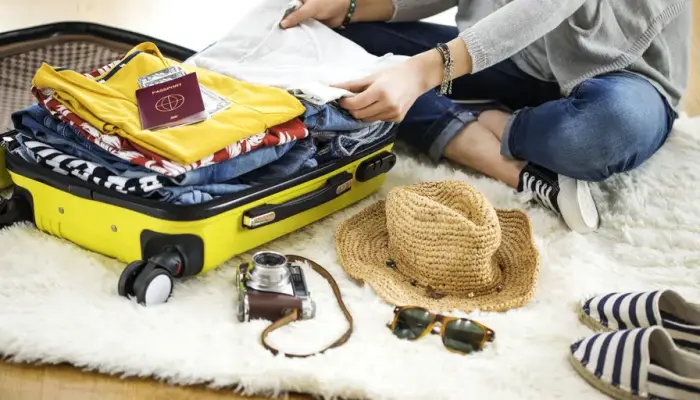When preparing for a journey, it's important to carefully consider a list of essential items to ensure you don't forget anything important. We offer you a detailed checklist that will help you organize your preparations and take care of all the details.
1. Documents and Money
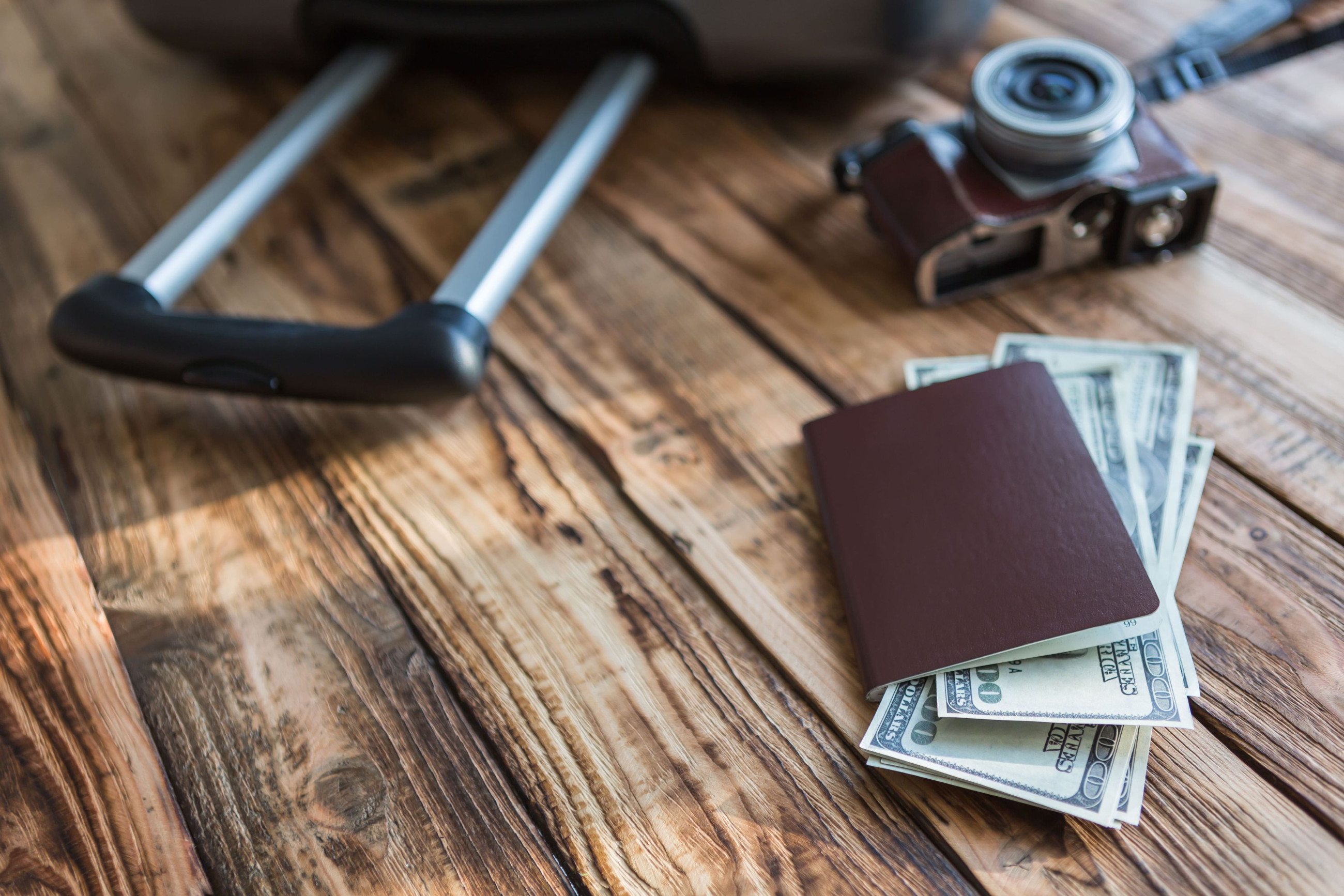
Start by ensuring timely processing of all necessary documents and financial means:
- Passport and driver's license;
- For international trips: passport, visas, insurance;
- Documents for children (birth certificates, passports, travel permits);
- Documents for pets (if applicable);
- Car documents (if traveling by car);
- Printed tickets (flight and train);
- Printed hotel or accommodation reservation;
- Bank cards and cash.
Check the validity period of documents and bank cards in advance. Make copies of identity documents and send scans to your email for backup. Protect documents and cards with chips from scanning by using special covers or organizers.
Distribute cash into different compartments of your bag and pockets, allocating a small amount for petty expenses.
2. Clothing and Footwear
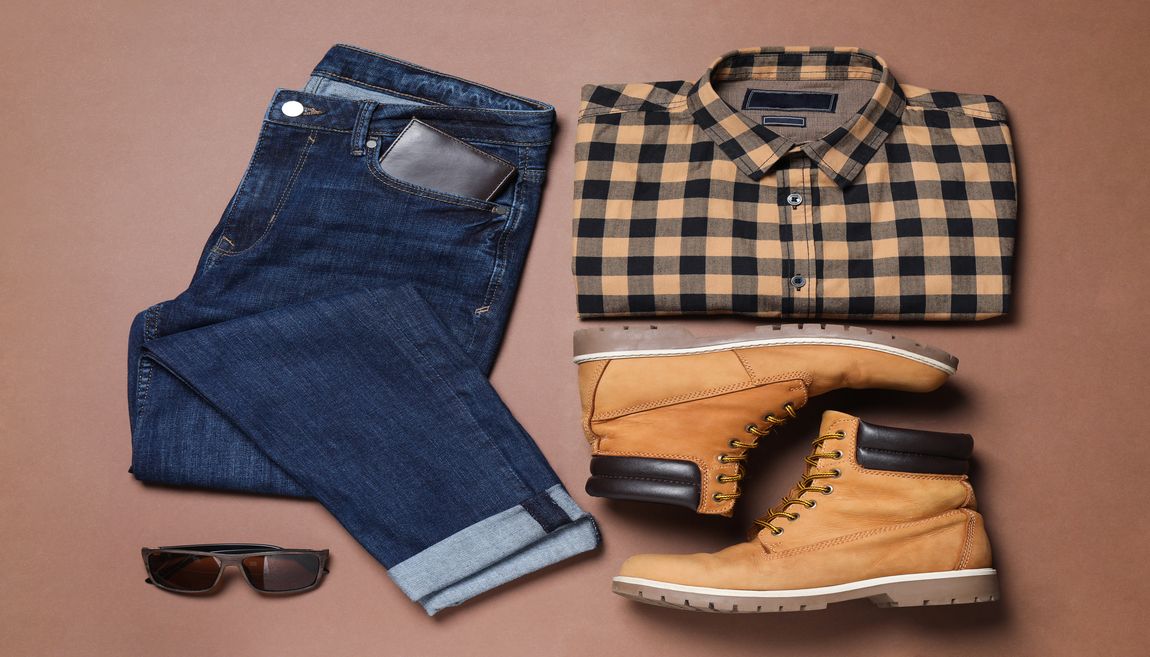
Depending on the season and climate of your destination, you'll need:
- Underwear (one set for each day of the trip);
- Socks or stockings (including warm ones);
- Pyjamas;
- T-shirts with short and long sleeves, sweaters;
- Jeans, sweatpants, shorts;
- Light fleece jacket with multiple pockets;
- Warm scarf, hat, gloves;
- Footwear: comfortable sneakers, moccasins or sports sandals, walking boots, rubber slippers.
Remember the "1-2-3-4-5-6" rule: for a two-week trip, one hat, two pairs of shoes, three pairs of pants, four T-shirts, five pairs of socks, and six sets of underwear are sufficient.
To save space in your bag, roll clothes into tight bundles and use the interior space of shoes for storing small items.
3. Cosmetics and Toiletries
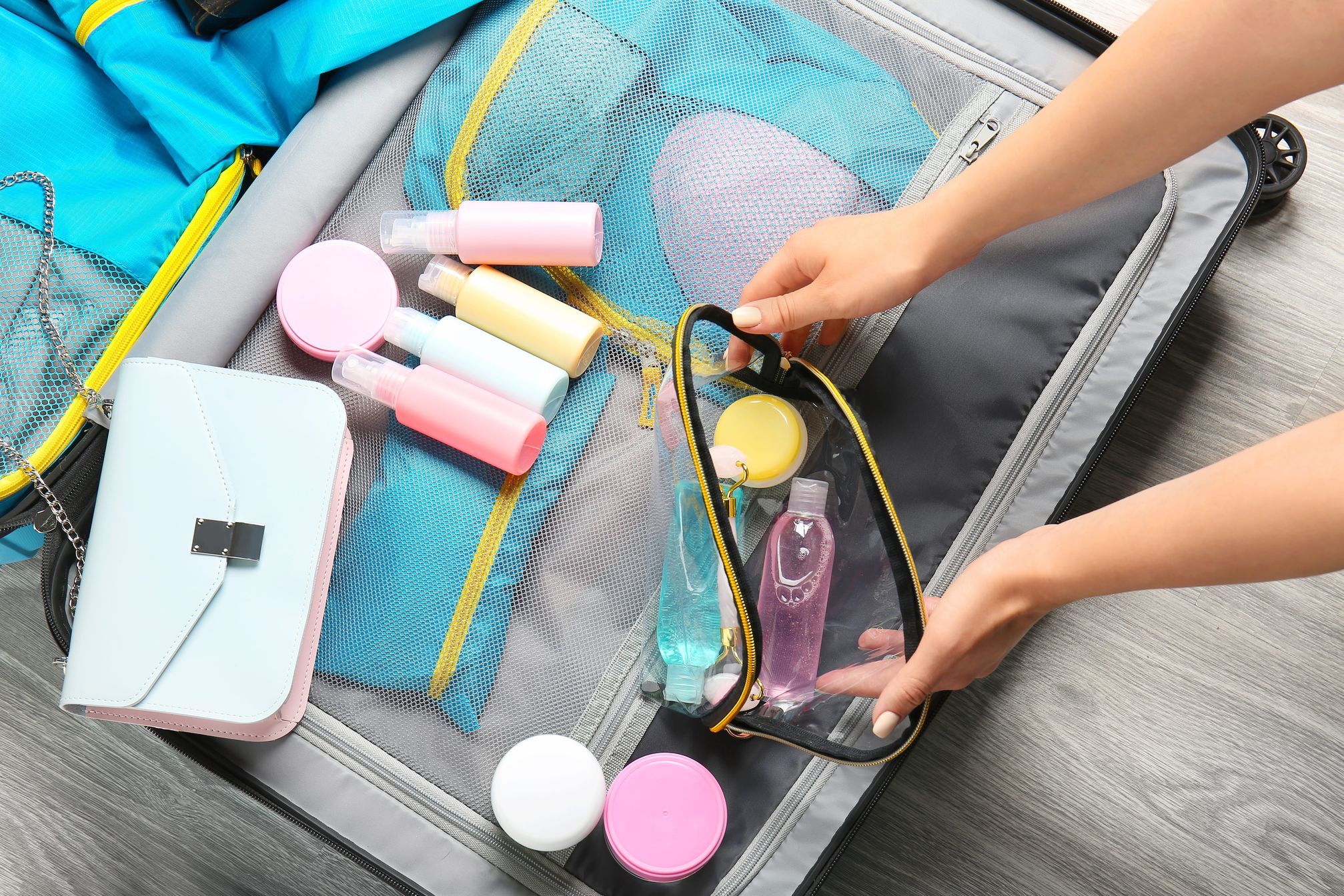
Your travel bag should include the following hygiene items:
- Wet wipes (antibacterial for hands, for intimate hygiene);
- Toiletries (soap, deodorant, shower gel or dry shower, shampoo, toilet paper);
- Skincare products (masks, eye patches, moisturizer);
- Makeup and cotton pads for its removal;
- Sun protection cosmetics (cream, lotion);
- Hair styling products;
- Oral hygiene products (toothpaste, brush, floss, mouthwash);
- Shaving supplies and spare razors;
- Stain remover (especially relevant when traveling with children).
Consider airline restrictions on the volume of liquids and aerosols in carry-on luggage - take products with a volume of no more than 50-100 ml. Prefer universal products, such as BB cream for the face, combining the functions of foundation, moisturizer, and sun protection, or 3-in-1 moisturizer for face, hands, and body.
4. First Aid Kit
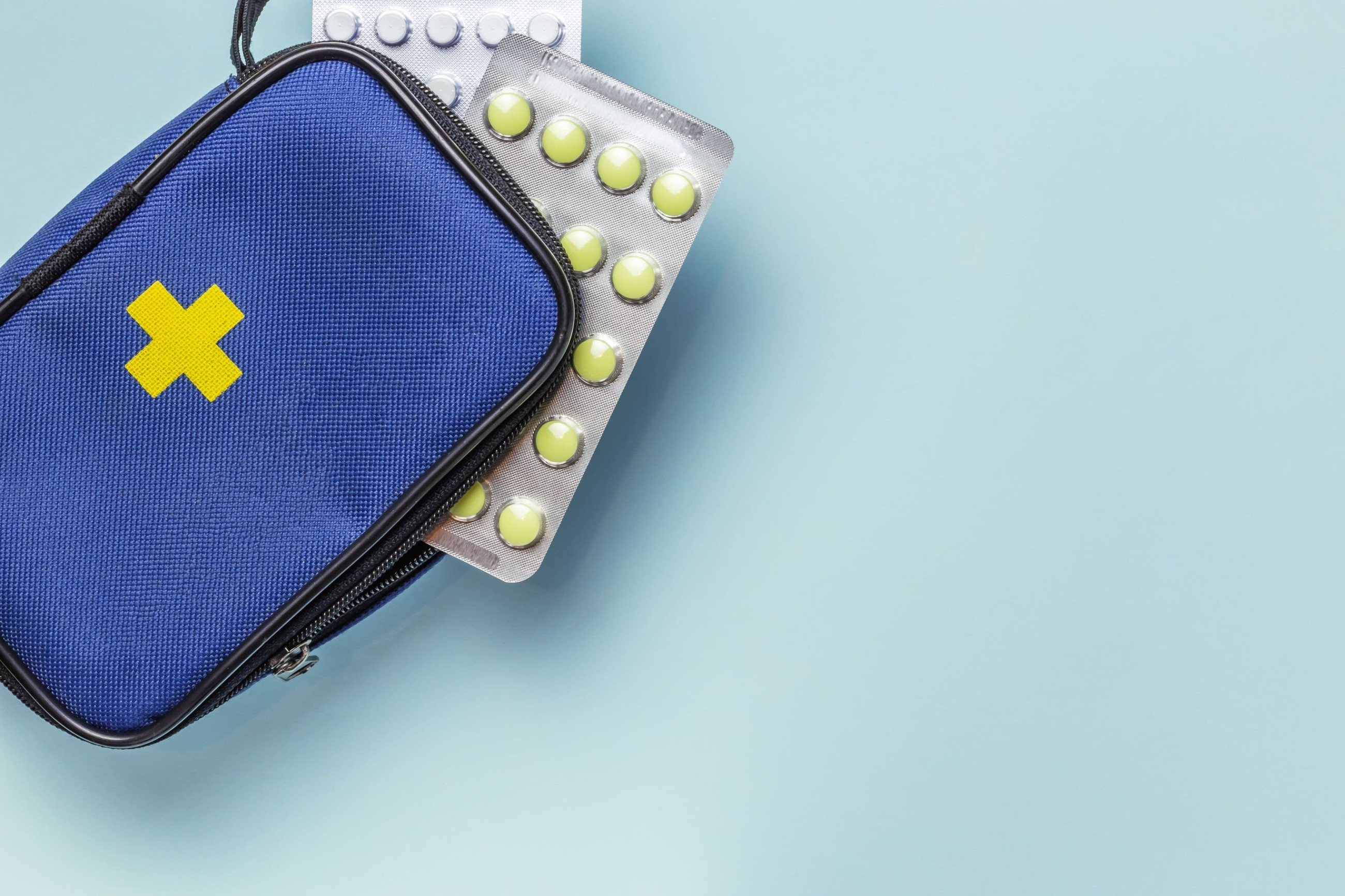
Your travel first aid kit must include:
- Hand sanitizer and medical masks;
- Fever and pain relievers;
- Allergy remedies;
- Ointment for swelling relief in case of injuries;
- Antibacterial ointment;
- Hydrogen peroxide, bandage, adhesive plaster;
- Thermometer;
- Throat lozenges and sprays;
- Diarrhea remedies, rehydration powders;
- Contraceptives, condoms;
- Motion sickness tablets;
- Relaxants and sleeping pills.
Place the ready-made first aid kit in a waterproof bag and keep it in an easily accessible compartment of your bag. Use a special organizer for convenient distribution of medications by day. For people with chronic conditions, provide a supply of consumables (inhalers, glucose meter test strips, insulin syringes with needles, etc.). Don't forget to take prescriptions for medications with you, sending copies to your email beforehand.
5. Universal Items

The set of universal items that may come in handy during your travels depends on the route, mode of transportation, and living conditions. In general, it's worth taking along:
- Mineral or filtered water without gas;
- Energy bars, chocolate, nuts for quick snacks;
- Raincoat or umbrella;
- Needle, thread, nail scissors;
- Hairbrush;
- Notebook and pen;
- Trash bags;
- Chargers for gadgets, adapters, power bank;
- Headphones;
- Multi-tool or pocket knife;
- Thermos or insulated mug;
- Sunglasses;
- Map, guidebook, phrasebook;
- Flashlight with batteries;
- Matches or lighter.
Note that some items (scissors, knives, sharp razors) may be prohibited for carry-on baggage.
6. What to Take When Traveling with a Child
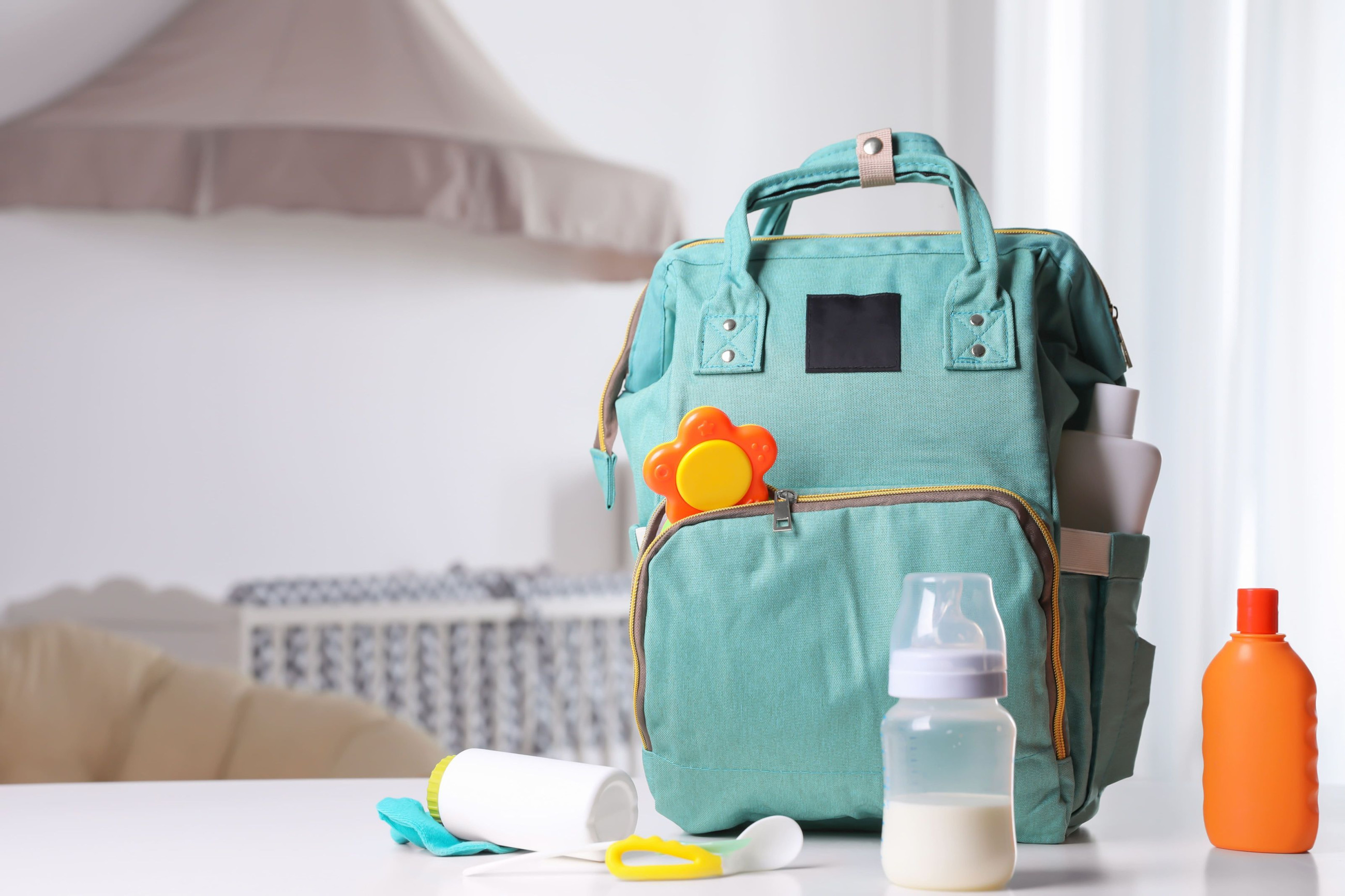
When traveling with children, additionally pack the following items in your bag:
- Baby food, healthy snacks (nuts, dried fruits, fruit chips, puree pouches), clean drinking water;
- Hygiene items (diapers, wet wipes, talcum powder, baby soap, toothbrush and paste);
- A set of baby dishes, bottles;
- Disposable bags for trash or vomiting;
- Ziplock bags for dirty clothes;
- A set of baby clothes;
- Blanket;
- Child's medical card and vaccination record, pediatrician's contacts;
- Favorite toys;
- Socket protectors or baby monitor.
For breastfeeding moms, 1-2 spare nursing bras, comfortable clothing for this purpose, and a breast pump if necessary are necessary.
If you're bringing bulky child items (car seat, stroller, etc.), check the rules for their transportation with the airline.
To entertain children on the road, bring sticker books, puzzles, UNO cards, a coloring book with markers or pencils, coloring pages, as well as gadgets. Additionally, the Yesim mobile app will allow them to engage in online learning or communication with friends.
7. What Bags to Take on a Trip
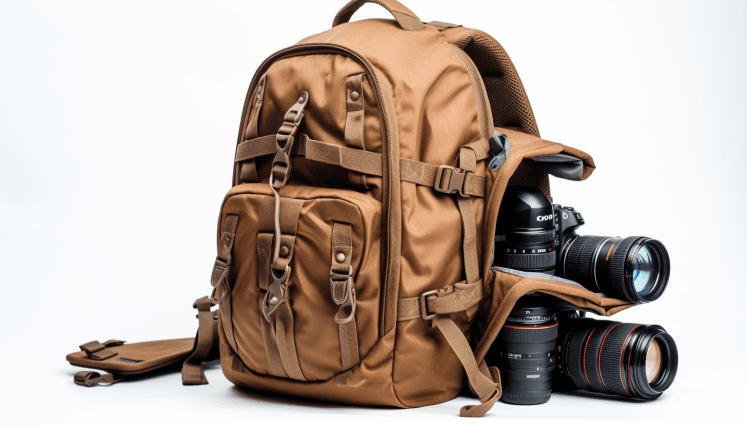
The optimal set of travel bags includes:
- A small shoulder or waist bag - for documents and money;
- A carry-on bag - containing all necessary items that may be needed during the journey (water, snacks, hygiene items, change of clothes and shoes);
- A large suitcase for main luggage.
Essential items should preferably be packed in a transparent case and placed at the top of the bag for quick access.
All bags should have reflective elements and tags with the owner's name and phone number, and children's backpacks should have tags with parents' contact information.
By following this checklist, you'll be able to organize your packing efficiently and not miss anything. Have a pleasant journey!
